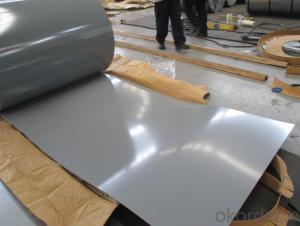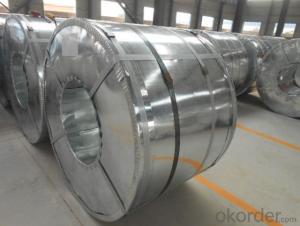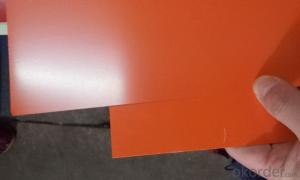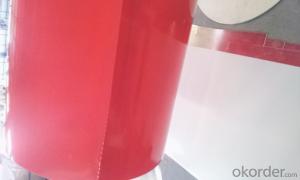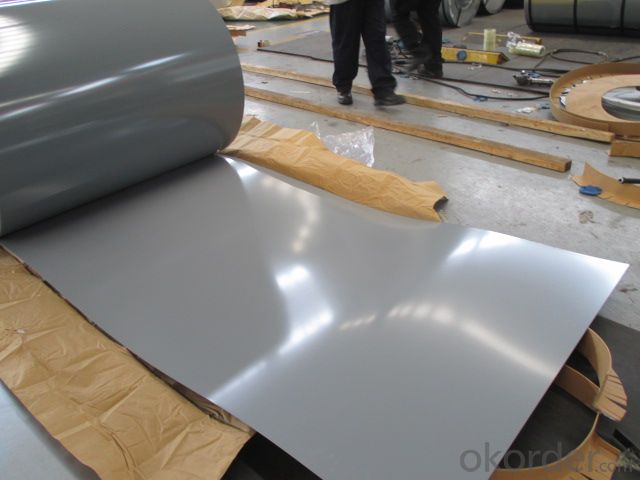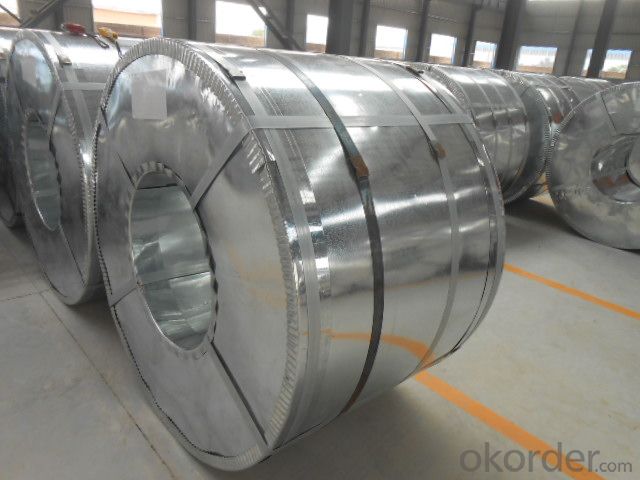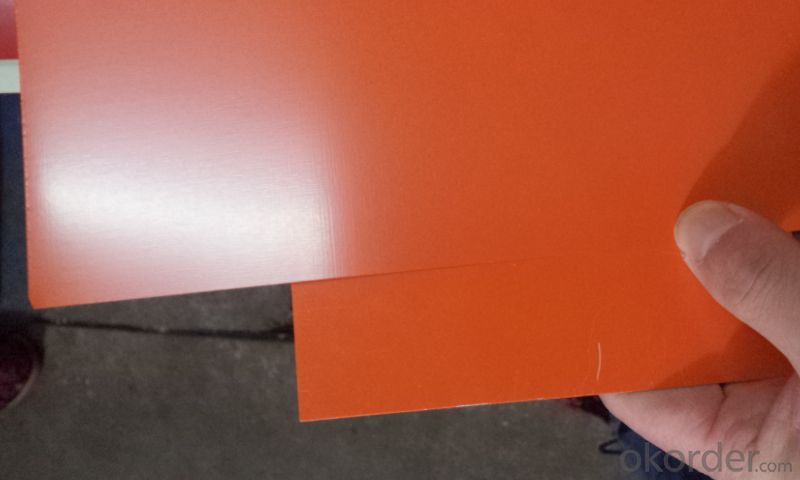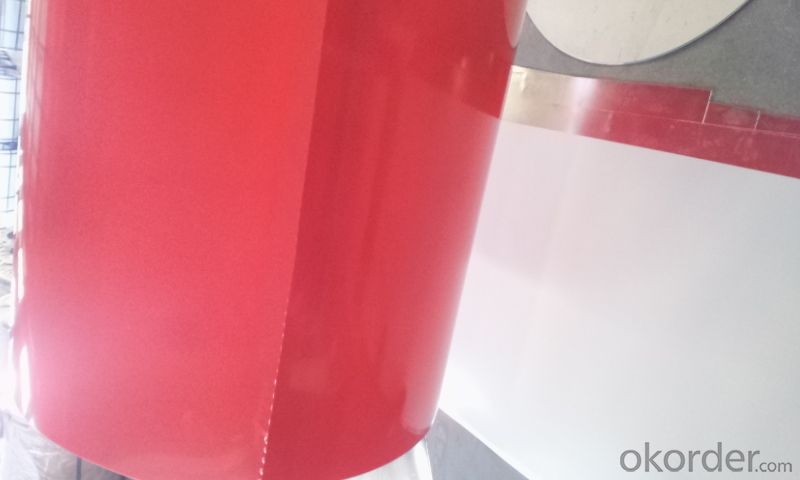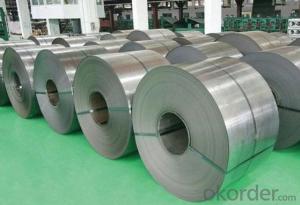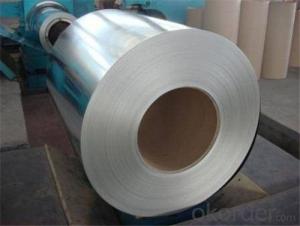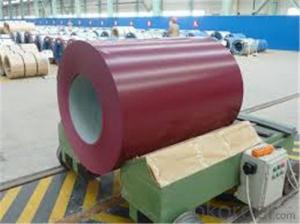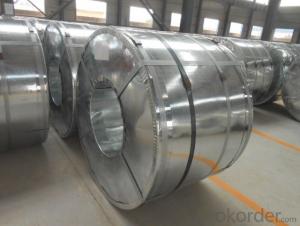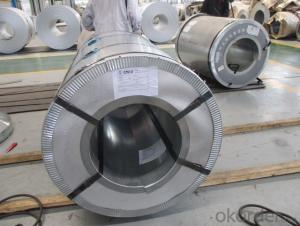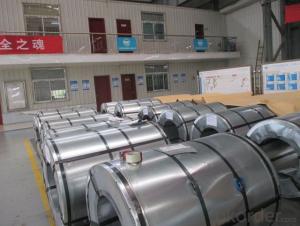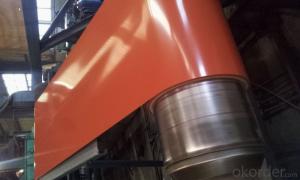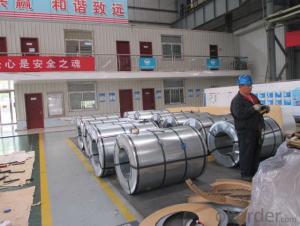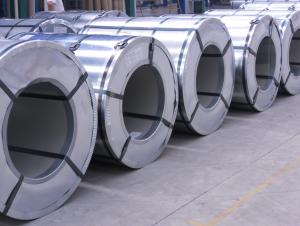PREPAINTED STEEL JIS G 3312 CGCC
- Loading Port:
- China Main Port
- Payment Terms:
- TT OR LC
- Min Order Qty:
- -
- Supply Capability:
- -
OKorder Service Pledge
OKorder Financial Service
You Might Also Like
PREPAINTED STEEL COIL
Packaging & Delivery
Packaging Detail: seaworthy export package
Delivery Detail: on request
Specifications
1. more than 10 years’ experience on this field
2. advanced equipments
3. competitive price
4. soonest delivery
Product Description :
Commodity
PREPAINTED STEEL COIL
Technical Standard: JIS 3312
Grade:CGCC
Types:Commercial / Drawing / Deep Drawing / Structural quality
Width: 900mm/1000mm/1219mm/1200mm/1220mm/1250mm
Thickness: 0.2mm~4.0mm
Type of coating: galvanized
Zinc coating: Z40-275g/m2,Z40-Z450g/m2
ID coil: 508mm or 610mm
Coil weight: 3-10/MT per coil
Package:Properly packed for ocean freight exportation in 20''container
Application::home appliances, constructions, building, machineries
Our Advantages :
1. Expertise:
More than 10 years of manufacture: we know how to properly handle every step of production.
2. Competitive price:
We can offer competitive prices to our customers.
3. Accuracy:
We have excellent technicians and leaders, which can ensure our products are exactly what you want.
4. Materials:
All galvanized steel coils are made of high-quality raw materials.
5. Certificate:
Our products are certified by ISO9001.
6. Productivity:
We have large-scales of production lines,, which can guarantee all your orders will be finished in earliest time.
Hr CGL Technical Process:
Coil loading-> uncoiling-> cutting-> welding-> entry accumulator-> Heating and deoxidization-> galvanizing-> air cooling->water quenching-> air dryer-> tension leveler-> Passivation->air dryer->exit accumulator-> oiling-> cutting-> recoiling->coil unloading-> packing
The furnace heating style: improved Sendzimir heating technology
Hourly output: max.76.3t/h
Process after coating: tension leveling, Passivation or oiling
Our Service
Our quality
Test Equipments of Prepainted Galvanized Steel Coil : Salt-spray tester; Atomic absorption spectrophotometer; Rockwell typer hardness tester; Tensile test machine; Metrohm titration; Laboratory Bend test machine.
Our packing
Properly packed for ocean freight exportation in 20''container, galvanized metal fluted rings on inner and outer edges, galvanized metal & waterproof paper wall protection disk, galvanized metal & waterproof paper around circumference.
R&D department
R&D department concentrates on researching and developing reliable products with best quality. The quality department test and control every process of production to guarantee the best quality of product
- Q: What are the different types of steel coil finishing equipment?
- There are several different types of steel coil finishing equipment used in various industries. These equipment are designed to perform specific tasks to ensure the steel coils are prepared and finished according to the desired specifications. Some of the commonly used types of steel coil finishing equipment include: 1. Slitting lines: Slitting lines are used to cut large steel coils into narrower strips. These machines have multiple slitting knives that can cut through the coil at high speeds, resulting in precise and clean cuts. Slitting lines are typically used in industries such as automotive, construction, and packaging. 2. Leveling lines: Leveling lines are used to flatten and straighten steel coils that may have uneven surfaces or irregularities. These machines use a combination of leveling rolls and tension control systems to ensure that the steel coils are perfectly flat and have consistent thickness throughout. Leveling lines are commonly used in the manufacturing of appliances, furniture, and metal roofing. 3. Recoiling lines: Recoiling lines are used to rewind steel coils into smaller coils of a specific diameter and weight. These machines are equipped with winding units that carefully wind the steel strip around a mandrel, creating compact and evenly wound coils. Recoiling lines are typically used in industries such as electrical, HVAC, and steel distribution. 4. Cut-to-length lines: Cut-to-length lines are used to cut steel coils into specific lengths as per the customer's requirements. These machines have precision measuring systems that accurately measure the length of the coil and hydraulic shears that cut the coil accordingly. Cut-to-length lines are commonly used in industries such as manufacturing, construction, and fabrication. 5. Coating lines: Coating lines are used to apply protective coatings or finishes on steel coils to enhance their corrosion resistance, durability, and appearance. These lines typically consist of cleaning and pre-treatment sections, where the coils are cleaned and treated with chemicals, followed by coating application sections where the desired coating material is applied. Coating lines are commonly used in industries such as automotive, appliances, and construction. These are just a few examples of the different types of steel coil finishing equipment available in the market. Each type serves a specific purpose and plays a crucial role in the manufacturing and processing of steel coils for various applications.
- Q: How are steel coils inspected for formability using forming tests?
- To assess their ability to be shaped into desired forms without any defects or failures, steel coils undergo inspections for formability through the use of forming tests. These tests are conducted to evaluate the mechanical properties of the material and determine if it is suitable for specific applications. Forming tests consist of subjecting the steel coil to different forming operations, such as bending, deep drawing, or stretch forming. The coil is typically cut into specific dimensions and then subjected to these operations using specialized equipment. The main objective is to replicate the actual forming process that the steel will experience in real-world applications. During the forming tests, several parameters are carefully monitored. These parameters include the amount of force or load applied, the rate of deformation, and the resulting strain or deformation experienced by the steel. Additionally, the response of the coil to these operations is observed, including any visible defects like cracks, fractures, or surface imperfections. By thoroughly analyzing the performance of the steel coil during the forming tests, various characteristics related to formability can be determined. These characteristics include the material's ability to resist deformation, its capacity to withstand strain without failure, and its tendency to exhibit defects under specific forming conditions. The results obtained from these tests provide valuable insights into the suitability of the steel coil for particular forming processes and applications. Furthermore, advanced techniques such as digital image correlation and strain analysis can be utilized to precisely measure and evaluate the distribution of strain across the surface of the steel coil. These techniques assist in identifying areas of the coil that experience higher strain and potential points of failure. In summary, the formability of steel coils is assessed through forming tests that simulate the actual forming processes they will undergo. These tests evaluate various formability characteristics, including the material's resistance to deformation and its likelihood of defects. The results obtained from these tests aid in determining the suitability of the steel coil for specific applications and guide the selection of appropriate forming parameters.
- Q: What is the difference between galvanized and galvalume steel coils?
- Galvanized and galvalume steel coils are both types of steel coils that have undergone a coating process to enhance their durability and resistance to corrosion. However, there are distinct differences between the two. Galvanized steel coils are coated with a layer of zinc. This coating provides excellent corrosion resistance and protects the underlying steel from rust and other forms of deterioration. The zinc coating also acts as a barrier against moisture and prevents the steel from coming into direct contact with the elements. Galvanized steel coils are commonly used in applications where corrosion resistance is crucial, such as in construction, automotive manufacturing, and agricultural equipment. On the other hand, galvalume steel coils are coated with a combination of zinc and aluminum. This unique coating composition provides enhanced corrosion resistance compared to galvanized steel coils. The aluminum in the coating acts as a sacrificial anode, offering additional protection to the steel by sacrificially corroding instead. This sacrificial protection mechanism helps the underlying steel to remain intact and prevents the spread of corrosion even if the coating is damaged. Galvalume steel coils are often used in environments where extreme weather conditions and high humidity are prevalent, making them suitable for roofing, siding, and other outdoor applications. In summary, the main difference between galvanized and galvalume steel coils lies in the composition of their coatings. Galvanized steel has a zinc coating, while galvalume steel has a combination of zinc and aluminum. Galvalume steel offers superior corrosion resistance due to the sacrificial protection provided by the aluminum in the coating. The choice between the two depends on the specific application and the level of corrosion resistance required.
- Q: What are the different methods of perforating steel coils?
- There are several methods of perforating steel coils, including rotary punch, laser cutting, and stamping. Each method offers its own advantages and is chosen based on factors such as the desired hole size, material thickness, and production volume. Rotary punch involves using a rotating tool to create holes in the steel coil, while laser cutting uses a high-powered laser beam. Stamping, on the other hand, involves using a die and press to create holes by applying pressure to the steel coil.
- Q: Why buy recycled steel and from where to buy?
- Recycling old steel is very advantageous to manufacturers because it is always cheaper to use recycled metal scrap in Dubai than to expensively mine iron ore to gain it. Lucky Groups is one the recognized company to deal in recycled steel.
- Q: How are steel coils used in the manufacturing of cables?
- Steel coils are used in the manufacturing of cables as they provide strength and support to the cable structure. The steel coils are typically used as armor or reinforcement, helping to protect the cables from external elements and maintain their structural integrity.
- Q: What are the surface treatments for steel coils?
- Some common surface treatments for steel coils include galvanizing, painting, and coating. These treatments are applied to protect the steel from corrosion, improve its appearance, and enhance its durability.
- Q: What are the common coil edge finishes?
- The common coil edge finishes include slit edge, mill edge, and deburred edge.
- Q: What are the different types of steel coil surface finishes?
- There exist various options for steel coil surface finishes, each possessing distinct characteristics and uses. Some of the most frequently seen types are as follows: 1. Hot rolled: Achieved by subjecting the steel to high temperatures, resulting in a rough and textured surface. Hot rolled steel coils are commonly employed in applications where aesthetics are not a priority, such as structural or industrial projects. 2. Cold rolled: In contrast to hot rolled steel, cold rolled steel coils are processed at lower temperatures, resulting in a smoother and more refined surface. This finish is suitable for applications where a clean and polished appearance is desired, such as automotive parts, appliances, and furniture. 3. Galvanized: These steel coils are coated with a layer of zinc to safeguard against corrosion. This finish provides excellent rust resistance and can be utilized in various outdoor applications, including roofing, fencing, and signage. 4. Stainless steel: Stainless steel coils possess a unique finish that is resistant to corrosion, staining, and rust. Due to this, they find great versatility and suitability across a wide range of applications, including kitchen appliances, medical equipment, and architectural projects. 5. Coated: Coated steel coils are treated with a protective layer of paint or other coatings to enhance durability and aesthetic appeal. This finish is commonly employed in the construction industry for applications such as roofing, siding, and garage doors. 6. Pre-painted: Before being formed into the final product, pre-painted steel coils are coated with a layer of paint or resin. This finish offers a wide range of colors and finishes, making it popular for applications such as building cladding, appliances, and automotive parts. In summary, the selection of a steel coil surface finish relies on the specific requirements of the project, including aesthetics, corrosion resistance, and durability. Each finish has its own advantages and disadvantages, and it is crucial to consider these factors when choosing the appropriate type of steel coil surface finish for a particular application.
- Q: can you play one?
- Yessir. No, I can only play a piano and Guitar Hero.
Send your message to us
PREPAINTED STEEL JIS G 3312 CGCC
- Loading Port:
- China Main Port
- Payment Terms:
- TT OR LC
- Min Order Qty:
- -
- Supply Capability:
- -
OKorder Service Pledge
OKorder Financial Service
Similar products
Hot products
Hot Searches
Related keywords
